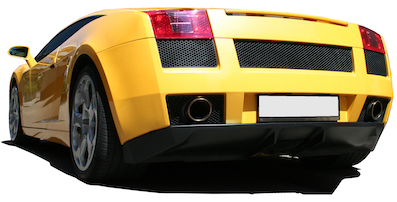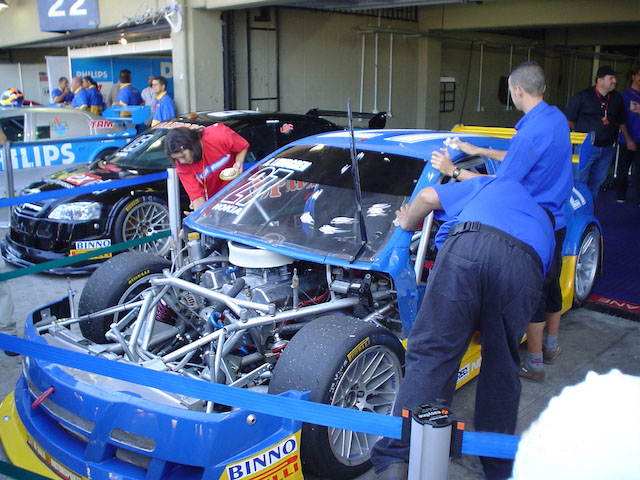The Anatomy Of A Race Car Chassis
The race car chassis is the most fundamental component of any high-performance vehicle. It serves as the skeleton of the car, providing structure and support for various systems. The chassis connects the engine, suspension, and body, making it a central element in how the car performs on the track. A well-designed chassis helps improve handling, stability, and safety. The material choice, design, and construction techniques all contribute to its overall performance. Understanding the role of the chassis in a race car is crucial for drivers, engineers, and enthusiasts.
Types of race car chassis
Race car chassis come in various designs, each suited to specific racing disciplines. The most common types include tube frame chassis, monocoque chassis, and hybrid designs. Each type has distinct advantages depending on the race car’s purpose and desired performance. Tube frame chassis are often used in racing where weight and strength are critical factors. This type features a frame made from welded steel or aluminum tubes. It provides excellent rigidity and is relatively easy to repair or modify.
Monocoque chassis, on the other hand, are often used in higher-end motorsport applications. These chassis integrate the vehicle’s body and frame into one unit. This design maximizes stiffness while minimizing weight, making it ideal for high-speed racing. Hybrid chassis designs combine elements from both tube frame and monocoque structures. They aim to balance the benefits of both types, offering a combination of strength and lightness.
Materials used
The material used in the construction of a race car chassis directly impacts its strength, weight, and performance. The most common materials include steel, aluminum, carbon fiber, and titanium. These materials are chosen based on their properties, such as strength-to-weight ratio, durability, and cost. Steel is widely used in tube frame chassis due to its affordability and strength. It is relatively easy to work with, making it a popular choice for many racing teams. However, steel is heavier compared to other materials, which can impact performance.
Aluminum offers a significant weight reduction while maintaining strength. It is often used in both tube frame and monocoque chassis. Aluminum is a good balance between strength and weight, making it an excellent choice for many race cars. Carbon fiber is one of the lightest and strongest materials available. It is used primarily in monocoque chassis and hybrid designs. Carbon fiber’s superior strength-to-weight ratio makes it ideal for high-performance racing, though it is much more expensive.
Titanium, although expensive, is used in some high-end racing applications. Its light weight and high strength make it an attractive choice for specific components within the chassis.
Chassis design and geometry
The design and geometry of the race car chassis directly affect the handling and driving characteristics. Suspension geometry, weight distribution, and the stiffness of the chassis all play a role in how a car handles on the track. Suspension geometry refers to the arrangement and angles of suspension components such as control arms, shock absorbers, and linkages. Proper geometry ensures that the car handles predictably, especially during high-speed cornering.
Weight distribution is another crucial factor in chassis design. Most race cars aim for near 50/50 weight distribution between the front and rear axles. This balance helps optimize traction and stability, particularly during cornering and braking. The stiffness of the chassis influences how the car responds to forces experienced during a race. A stiffer chassis typically improves handling but can reduce comfort and increase the risk of structural failure if not properly designed.
Safety features
Safety is a top priority in race car design. The chassis must be engineered to protect the driver in the event of a crash. Several features are incorporated into the chassis to ensure the driver’s safety. Roll cages are one of the most important safety features in any race car. They are designed to protect the driver in the event of a rollover or impact. Roll cages are typically made from steel or other strong materials and are built to withstand extreme forces.
Side impact protection is also crucial. Many race cars feature additional reinforcement in the side sections of the chassis to protect the driver in the event of a side collision. These reinforcements help absorb the impact and prevent deformation of the driver’s seat area. The use of energy-absorbing materials in the chassis also enhances safety. Crumple zones are strategically placed in certain areas of the chassis to absorb energy during a crash, reducing the force transferred to the driver.
Aerodynamics
Aerodynamics plays a significant role in the performance of a race car. The chassis design must complement the aerodynamic features of the vehicle, such as the front splitter, rear wing, and diffuser. A well-designed chassis allows for the smooth flow of air around the car, reducing drag and increasing downforce. Downforce is the force that pushes the car down onto the track, increasing traction. A race car with more downforce can navigate corners at higher speeds without losing grip. The chassis can handle the stresses generated by increased downforce.
Chassis rigidity is also important for maintaining aerodynamic efficiency. A flexible chassis can distort under high aerodynamic loads, compromising performance. A stiff chassis ensures that aerodynamic components remain aligned and function as intended.
Chassis tuning and adjustments
Race car teams often make adjustments to the chassis to fine-tune the car’s performance. These adjustments optimise handling, grip, and stability based on the track conditions and driver preferences. Suspension settings, such as ride height, camber, and toe angle, are adjusted to affect how the car responds to the track. These changes influence the car’s handling characteristics and tire wear. The stiffness of the chassis can also be altered through the use of adjustable components like sway bars and shock absorbers. These adjustments allow teams to tailor the car’s behaviour to specific tracks or race conditions.
Maintenance and care
Maintaining a race car chassis is crucial to ensure consistent performance throughout a racing season. Regular inspections and maintenance are necessary to identify any signs of wear or damage. Cracks, corrosion, or bending in the chassis can compromise the integrity and safety of the car. It is also important to check the chassis alignment regularly. Misalignment can affect handling and tire wear, leading to slower lap times and increased risk of accidents. Proper alignment ensures that the car tracks straight and handles predictably.
Chassis maintenance also involves keeping the suspension system in top condition. Worn-out suspension components can negatively impact handling and comfort. Replacing worn-out bushings, shock absorbers, and control arms helps maintain optimal performance.
Evolution
The race car chassis has evolved significantly over the years. Early race cars used simple, basic frames of wood or steel. Advanced technology introduced materials like aluminium, carbon fibre, and titanium, leading to lighter and stronger chassis designs. In addition to material advancements, improvements in computer-aided design have allowed for more precise and efficient chassis designs. Engineers can now simulate the behavior of a chassis under various conditions, leading to better performance and safety.
The advent of advanced manufacturing techniques, such as carbon fiber layup and 3D printing, has further revolutionized the design and production of race car chassis. These innovations allow for greater customisation and faster development cycles.
Future
The future of race car chassis design depends on advancements in technology and materials. As racing continues to push the boundaries of performance, we can expect even more lightweight and durable chassis designs. The use of hybrid materials, combining metals, composites, and even advanced polymers, will likely become more prevalent. Additionally, the integration of electric and hybrid powertrains into racing is influencing chassis design. These powertrains require different cooling systems and weight distribution strategies, which will affect how we engineer the chassis.
Advancements in automation and artificial intelligence may also play a role in chassis development. Machine learning algorithms could analyse vast amounts of data to optimise chassis designs for specific race conditions, creating more efficient and responsive vehicles.
Evolution of motorsport
The evolution of race car chassis has been a driving force behind the progress of motorsport. Chassis design has continuously adapted to the changing demands of racing, leading to faster, safer, and more reliable vehicles. As technology continues to advance, the race car chassis will undoubtedly continue to evolve, setting new standards for performance and safety in the world of motorsport. The future promises even more exciting developments, with new materials and design techniques pushing the limits of what race cars can achieve on the track.
Expose your brand at the East African Safari Classic Rally05 – 13 December 2025
|






